Abstract
Dopamine (β-3:4-dihydroxyphenylethylamine) has a pressor action on the pulmonary vascular bed in isolated perfused lung lobes of the dog. Its pulmonary vasoconstrictor effect in this preparation is about 1/20-1/30 that of adrenaline or noradrenaline. When compared with adrenaline, dopamine is less effective as a vasoconstrictor in the bronchial vascular system than in the pulmonary circulation. Even very large doses of dopamine had no bronchomotor effect in the isolated perfused lung lobes. Addition of dopamine alone, or of dopamine together with some “new” blood, sometimes caused a potentiation of the pulmonary vasoconstrictor responses to sympathetic nerve stimulation.
Full text
PDF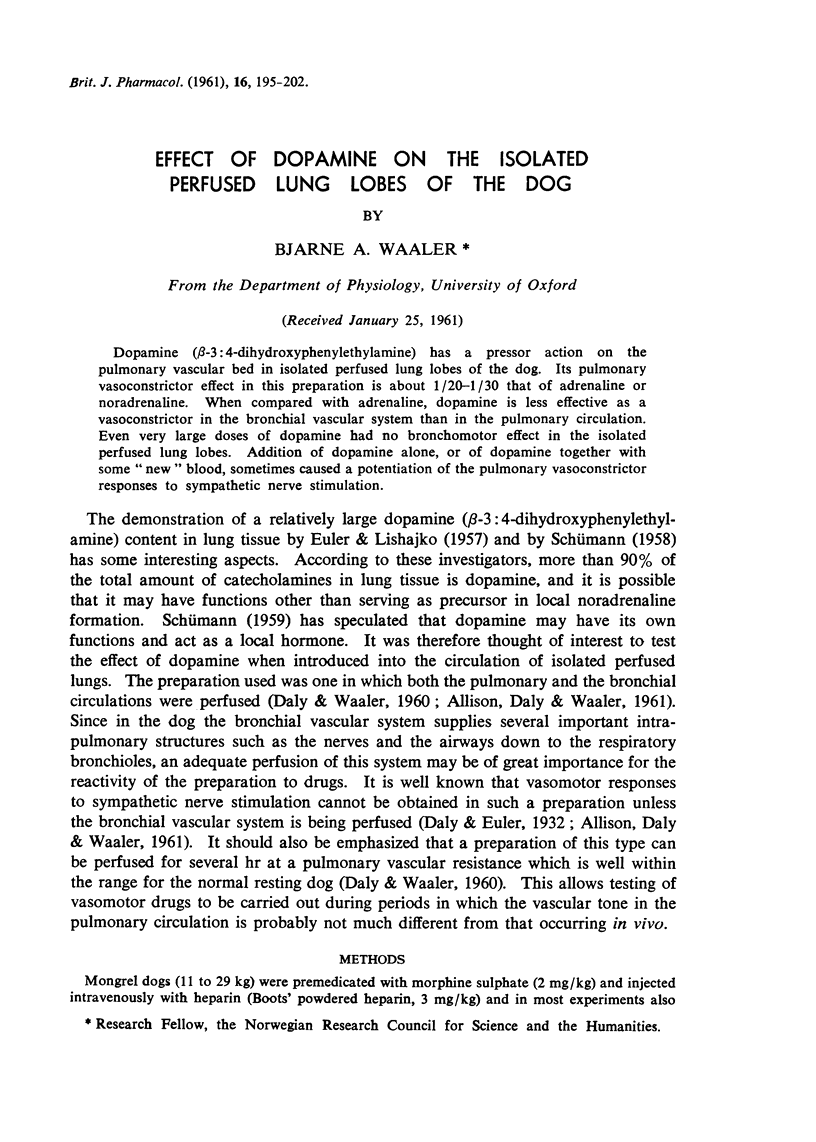
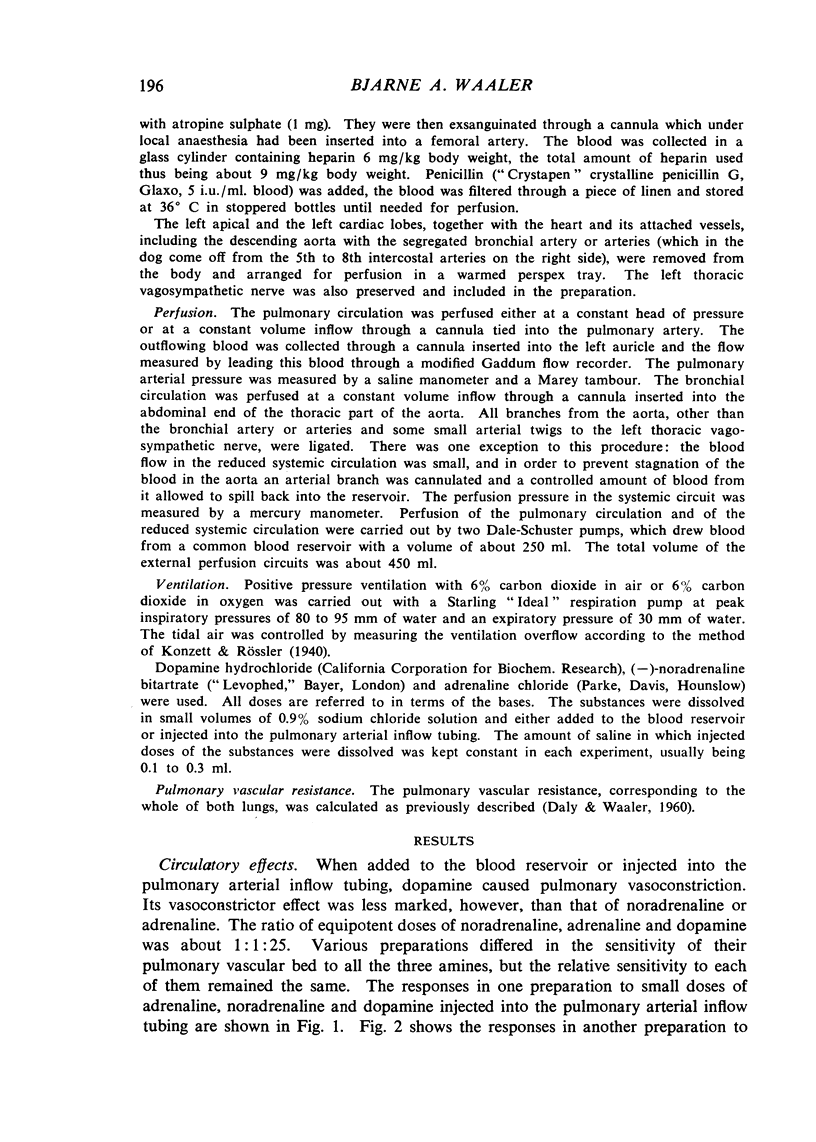
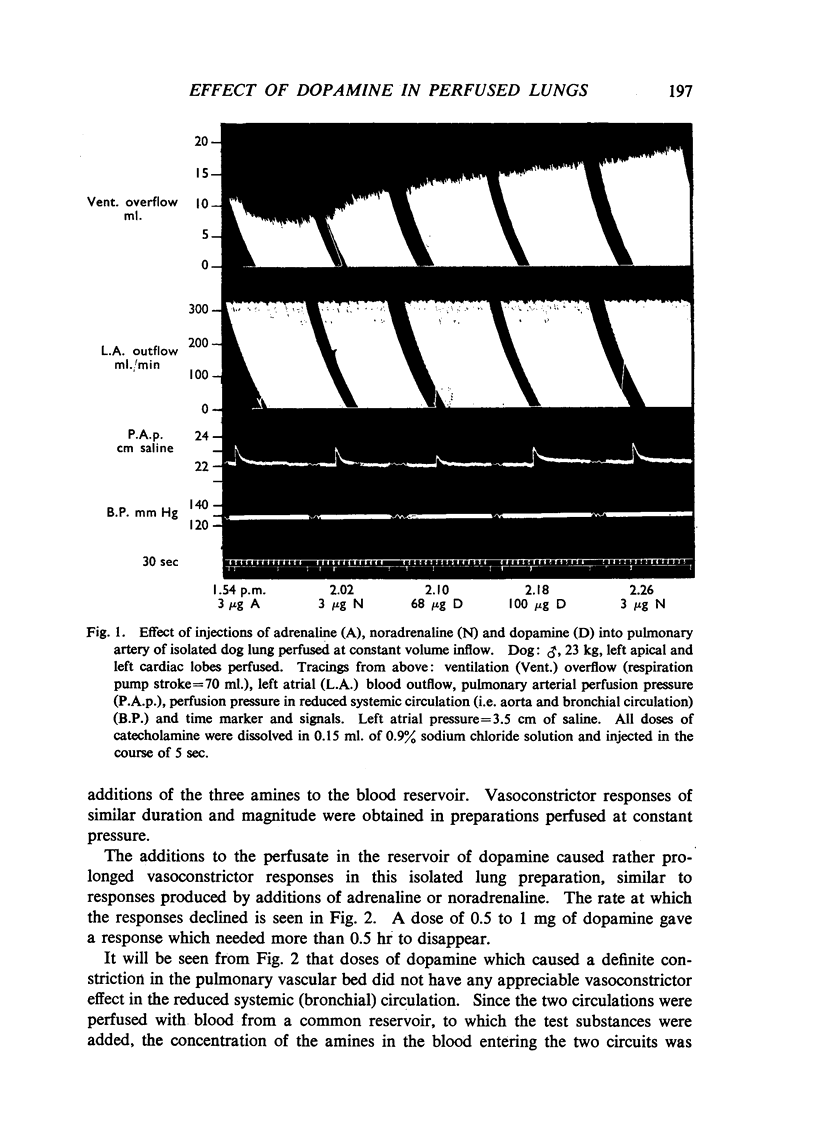
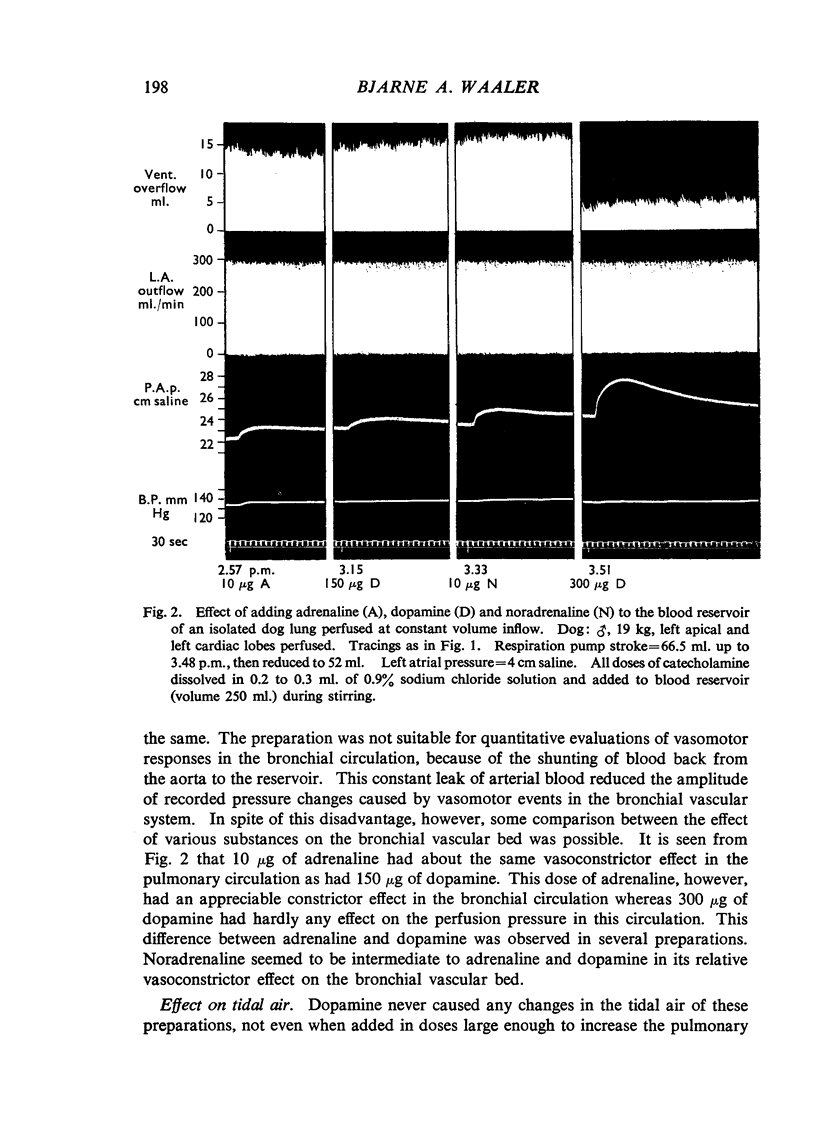
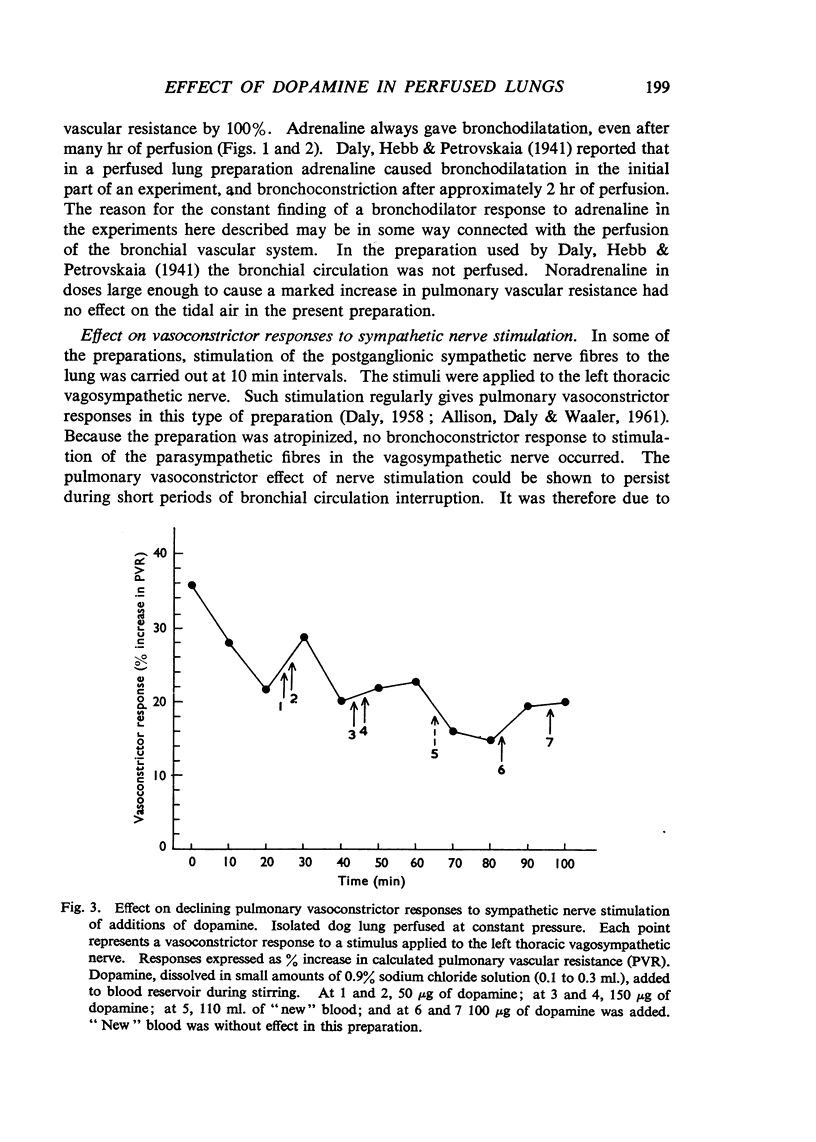
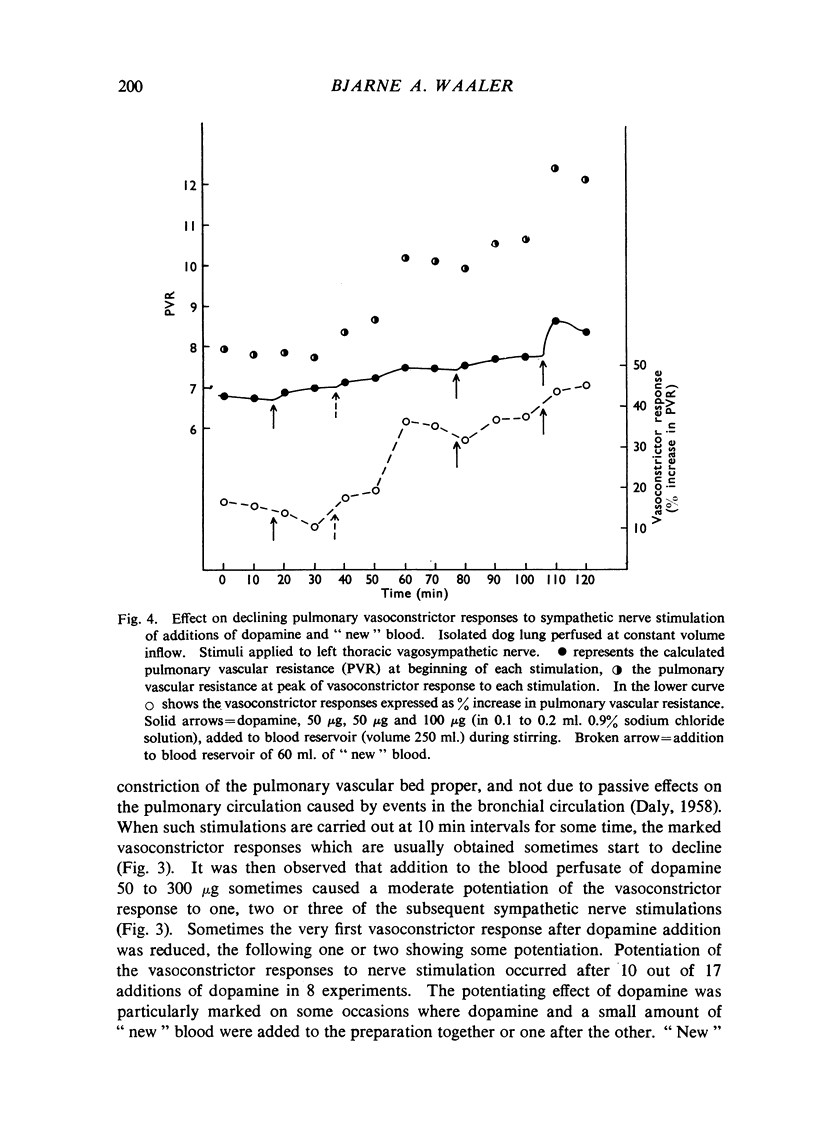
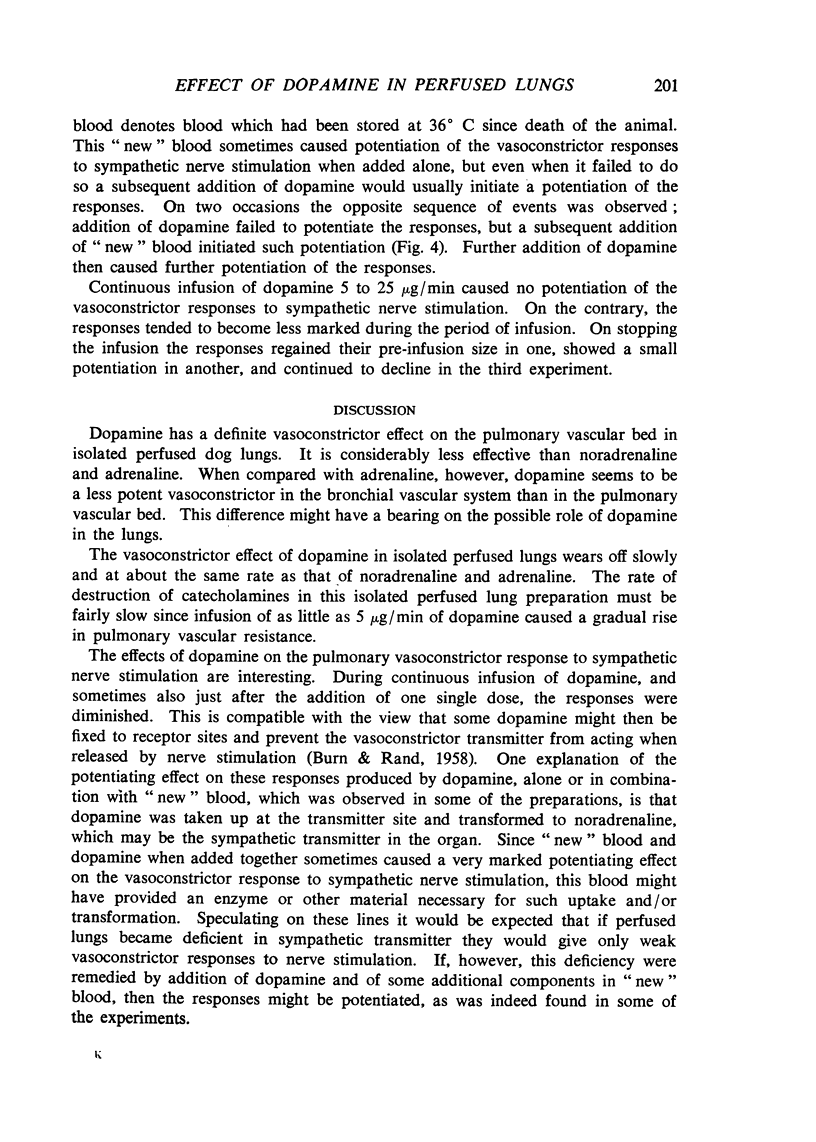

Selected References
These references are in PubMed. This may not be the complete list of references from this article.
- DE DALY I B. Intrinsic mechanisms of the lung. Q J Exp Physiol Cogn Med Sci. 1958 Jan;43(1):2–26. doi: 10.1113/expphysiol.1958.sp001304. [DOI] [PubMed] [Google Scholar]
- SCHUMANN H. J. Uber den Hydroxytyramin-und Noradrenalingehalt der Lunge. Naunyn Schmiedebergs Arch Exp Pathol Pharmakol. 1958;234(4):282–290. [PubMed] [Google Scholar]
- VON EULER U. S., LISHAJKO F. Dopamine in mammalian lung and spleen. Acta Physiol Pharmacol Neerl. 1957;6:295–303. [PubMed] [Google Scholar]


